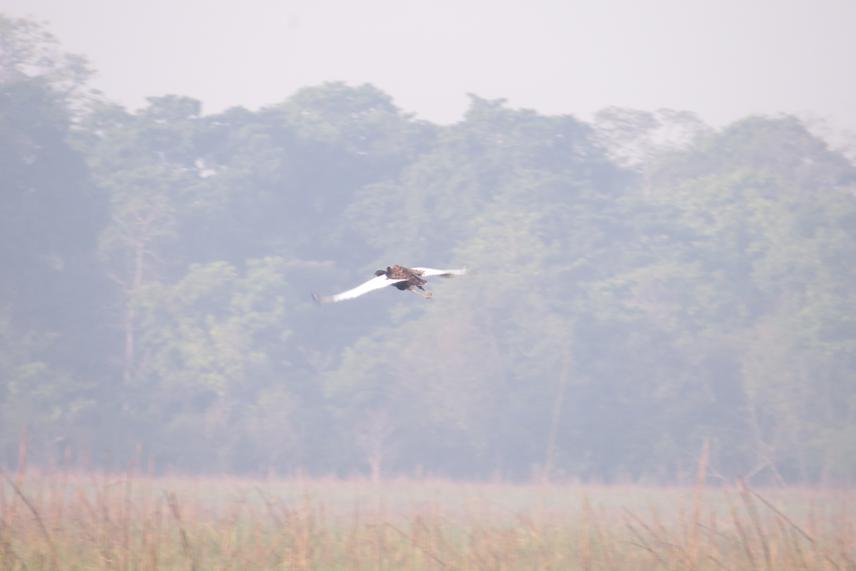Ritika Prasai
Other projects
12 Jun 2018
Analyzing Bengal Floricans’ (Houbaropsis bengalensis) Population Distribution Pattern in Different Grassland Habitat in Koshi Tappu Wildlife Reserve, Nepal
The prime objective of this research is to find out the habitat suitability, population and conservation status of Bengal Florican in Koshi -Tappu Wildlife Reserve, Nepal and to recommend the conservation strategy. This project will focus on involving community people throughout the research including from data collection during the field survey to conducting conservation awareness programs.

Bengal florican.
Bengal Florican (Houbaropsis bengalensis) is a highly threatened and rare ground nesting bird species inhabiting in Nepal, India, Cambodia and Vietnam. It is enlisted as a critically endangered species in the IUCN Red list category because of its small and rapidly declining population due to widespread loss of grassland habitat in its range .Lack of intensive study regarding its habitat condition and population distribution in its possible habitat range is deteriorating its existing population. This project aims to monitor the present habitat condition of Bengal florican in Koshi –Tappu Wildlife Reserve, Nepal, identify the suitable habitat condition to maintain their existing population as well as suggest appropriate footsteps to increase their population. This project will involve community people in data collection (during field survey) and conservation awareness programs to spread conservation awareness messages.
The baseline information obtained from this study will act as a touchstone for the conservation stakeholders to conserve Bengal Florican giving more attention and care during its breeding period. Furthermore, this project investigates the physical (grass height, temperature condition, humidity, rainfall) and biological (presence of other raptors) parameters of grassland during its breeding season (April-May). Distribution, habitat use, the status of habitat and other components will be identified and the possible influence of changing environment will also be analyzed. Possible site-specific Bengal Florican Conservation Area and seasonal habitat options to ensure reproductive success will be documented in the light of their seasonal survival strategy. Additionally, understanding their distribution in different seasons will help to estimate their potential home range. The scientific information generated by this study will be crucial to draft conservation plans and programs. This research will encourage other conservationists to involve in Bengal Florican conservation programs/dialogue and highlight the importance of carrying out in-depth research and conservation in other unexplored areas of Nepal. Furthermore, it will produce research articles, awareness posters, conference papers which can be used to understand Bengal Florican more closely to act for its conservation.